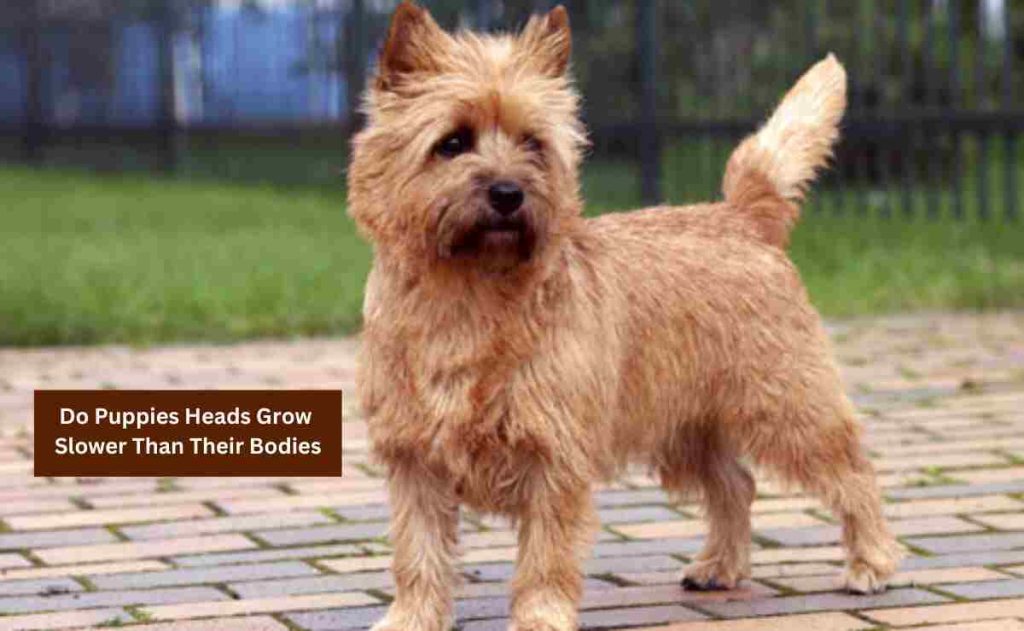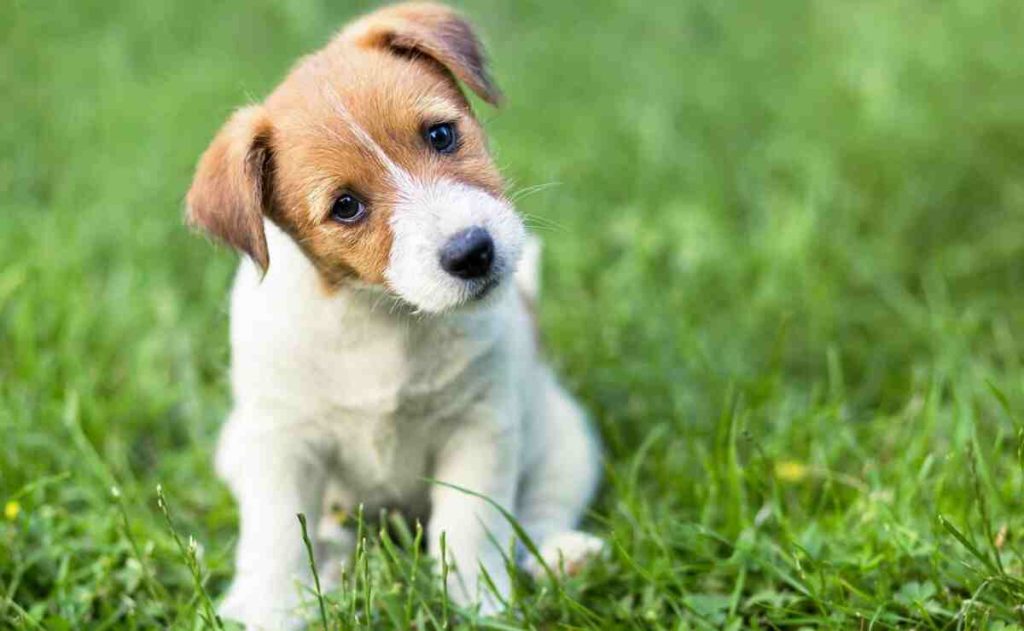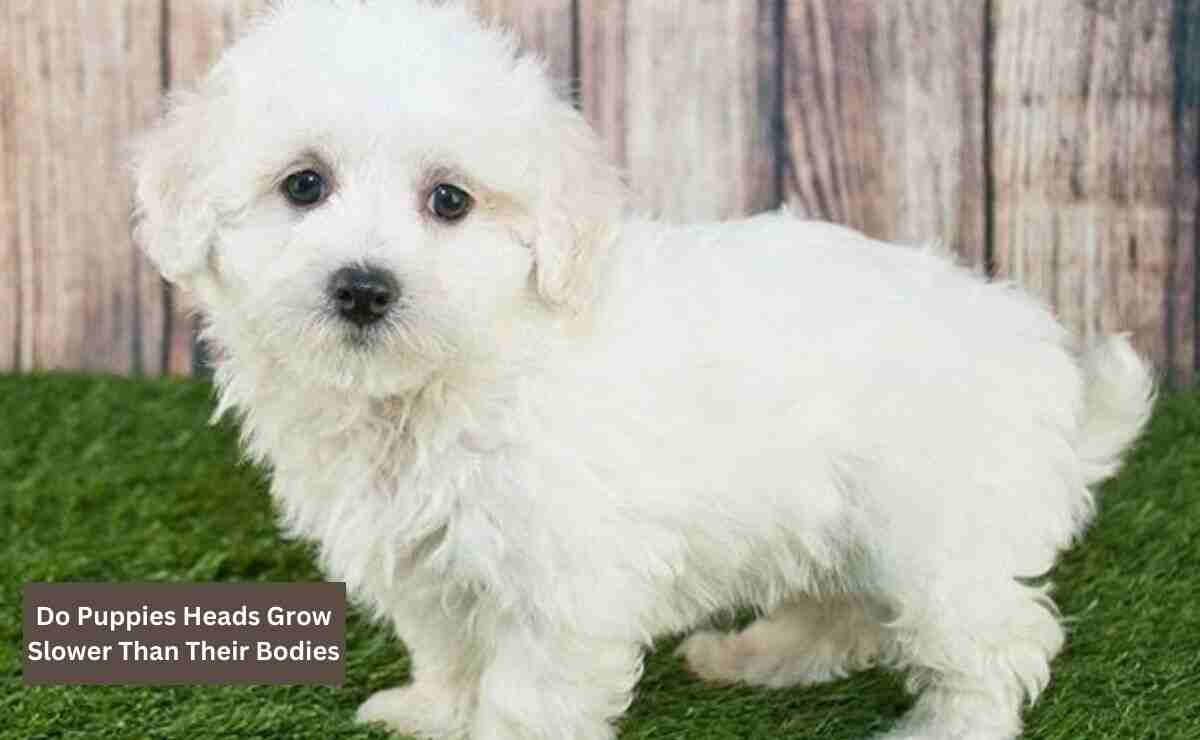There is a common belief that puppies’ heads grow slower than their bodies, but is there any truth to this statement?
The answer is no. The growth rate of the head and body of the puppies are the same. Apparently, it seems their body is growing faster than their head. But their head is already enough large when they are born.
As your puppy grows up, their body starts to catch up with their head, so there you have the confusion. Still, the growth rate differs depending on different breeds of dogs.
Do Puppies Heads Grow Slower Than Their Bodies?

When it comes to the growth of puppies, it depends on their breed. Different breeds have different growth rates. Some larger breeds may experience a slower growth rate compared to smaller breeds. However, this discrepancy in growth is not specifically related to the size of their heads.
The growth of a puppy’s head is typically proportional to the growth of its body. As the puppy grows, all parts of its body, including the head, undergo development. This ensures that the puppy’s body is balanced and proportionate as it matures into an adult dog.
Moreover, puppies go through various growth stages, similar to human children. During these stages, different body parts like the head, experience growth spurts at different times. This could give the perception that the head is growing slower, but it is simply a natural part of the overall growth process.
Another factor to consider is genetics. Different breeds have different genetic makeups, which can cause variations in growth patterns.
For example, some breeds may have larger heads or longer bodies, which can affect the appearance of the growth rate between these two areas. Ultimately, the growth of a puppy is a complex process influenced by a variety of factors.
Factors That Affect Puppies’ Growth Development
The growth process of a puppy is natural, yet there are a few aspects that can affect its development. They are:
Dog Breeds
One of the major factors of growth rate is the dog’s breed. There are many breeds such as Great Dane, Newfoundland, Saint Bernard, and Dogue de Bordeaux. They all have their distinctive features and you can see variations in head and body growth. The specific characteristics connected to each breed, including head size and that’s why you see the perceived differences.
Genetics
Genetics contribute significantly to a puppy’s growth tendency. Growth patterns like the balance between head and body can relate to the puppy’s family. A glance at the family history provides insights into whether the observed growth disparities are common or not.
Age
Age is a significant factor influencing growth patterns. Many puppies naturally outgrow disparities in head and body growth as they age. It’s a common occurrence, and pet owners need not overly worry if the puppy’s head seems to lag behind initially. So have patience as the puppy progresses through various growth stages.
General Nutrition
Nutrition plays a pivotal role in a puppy’s overall health and growth. If you can provide adequate protein (source of which is like meat , egg etc.) intake during the puppy stage, your puppies will have healthy growth.
If a puppy’s head growth appears slower than its body, it might be linked to the quality of food and nutrients provided. They may not get enough nutrition. So feed them a well-balanced diet according to the puppy’s needs for healthy growth.
Health
The overall health of a puppy can impact growth patterns. Health issues may interrupt the proper absorption of nutrients, potentially leading to malnutrition and slower head growth. A puppy’s health must be monitored regularly and if any unusual changes are noticed, an urgent consultation with a veterinarian is essential.
At What Age Does a Dog’s Head Stop Growing?

Many owners often wonder at what age their puppies reach their full size. However, the timeline for a dog’s growth can vary based on breed and size.
So, let us know when does a dogs head stop growing?
Smaller breeds typically mature at a faster rate than their larger counterparts. The intricate genetic blueprint of each breed plays a significant role in shaping the pace of growth, influencing not only the head but the entire body.
In a broad sense, most dogs stop their major growth and reach their full size by the age of 1-2 years old. This period marks the transition from puppyhood to adulthood. During this time, bones and muscles develop, and the various body parts, including the head, achieve their final dimensions.
For smaller breeds, this growth process tends to occur at the earlier end of the spectrum. In contrast, larger breeds might take a bit longer to fully mature. The head, being a significant feature, is part of this comprehensive growth process.
Proper nutrition is a key contributor to a dog’s healthy growth. So make sure your dog receives a balanced and appropriate diet according to their specific needs that will be helpful in the development of strong bones, muscles, and overall health.
Why Is My Puppy’s Head So Small?
While it’s common for a puppy’s head to appear smaller in comparison to their body during certain growth stages, there are instances where health issues may influence this phenomenon.
So here are some common health issues that affect puppies’ head growth:
1. Hydrocephalus (Water on the Brain)
Hydrocephalus is a condition when there is excess cerebrospinal fluid in the brain, resulting to an enlarged head. This can result in developmental uncertainties and neurological challenges for the puppy. If you observe a disproportionately small head or suspect any abnormalities, consulting with a veterinarian is essential for accurate diagnosis and appropriate management.
2. Craniosynostosis (Premature Fusion of Skull Bones)
Craniosynostosis means the premature fusion of skull bones, potentially causing the head to become misshapen and hindering normal brain growth. In severe cases, they need corrective surgery. If you notice irregularities in your puppy’s head shape, you should consult a vet immediately.
3. Other Health Issues
Various health issues like malnutrition, infections, or neurological disorders, can impact puppy head growth. For example, if your puppy has malnutrition issues, their overall growth development will be affected. Infections and neurological disorders also influence normal growth patterns.
If you have concerns about your puppy’s head size or notice any abnormalities, you should consult with a veterinarian. A comprehensive examination can help to identify the underlying cause of the issues.
Are Puppies Skulls Fully Developed?
No. Puppies’ skulls are not fully developed at birth, and they undergo significant changes as they mature. The skull bones in puppies are not fully fused, allowing for flexibility and growth during the early stages of development.
As puppies grow, the skull bones gradually fuse together, and the overall shape of the head amplifies. This developmental process is a normal part of a puppy’s growth, and it contributes to the distinct appearance of different breeds as they reach adulthood.
Remember that the rate of skull development can vary among breeds. Some breeds may experience more pronounced changes in head shape as they grow, while others may exhibit more subtle alterations.
Conclusion
Puppies’ head growth is a complex process. At a healthy stage, your puppy will have the right ratio of the head and body.
You can compare it with other puppies of the same breed. If you notice something odd, or their head is different in shape, you should consult a vet for further investigation and find the actual reason.
